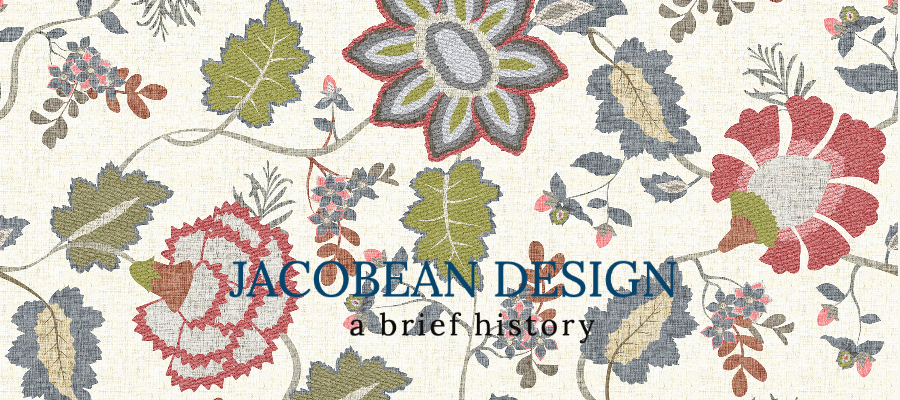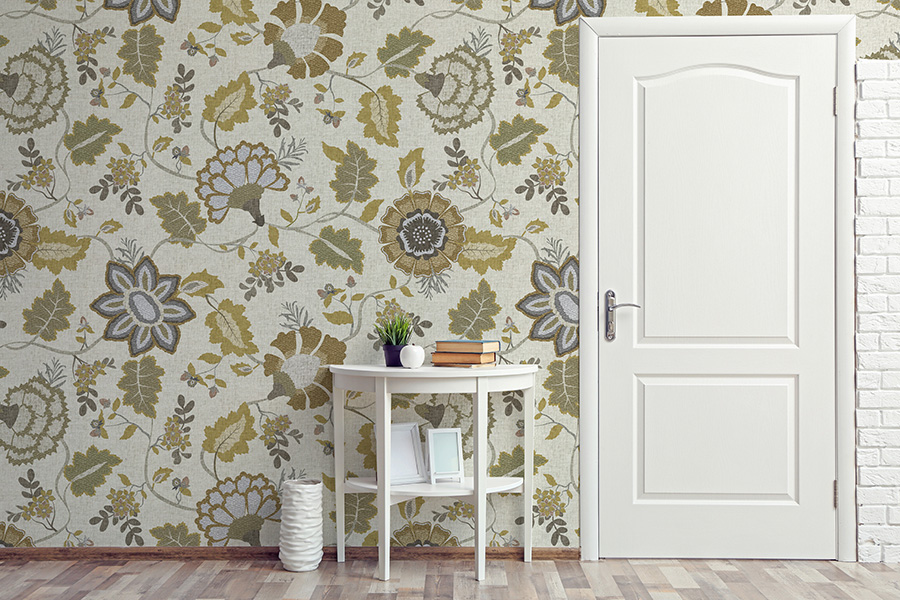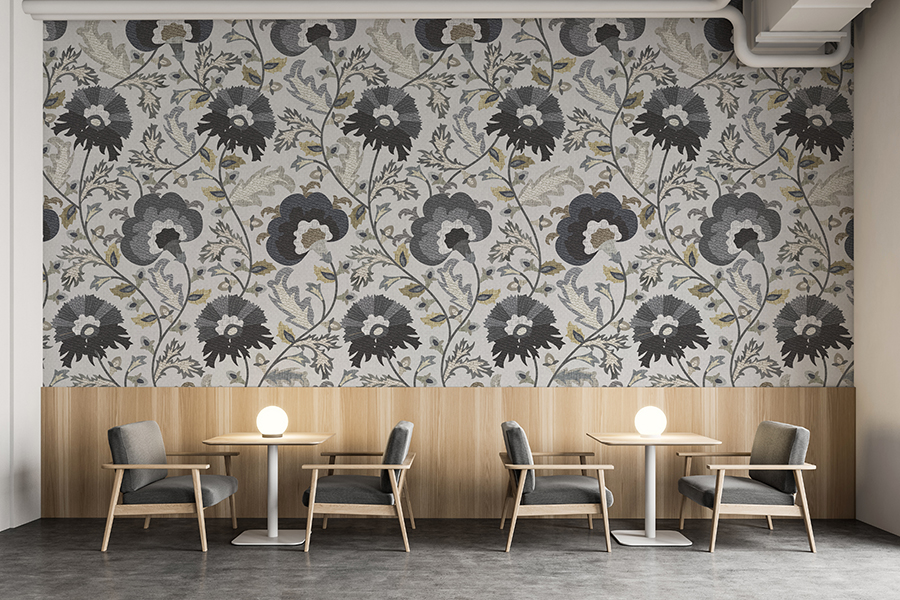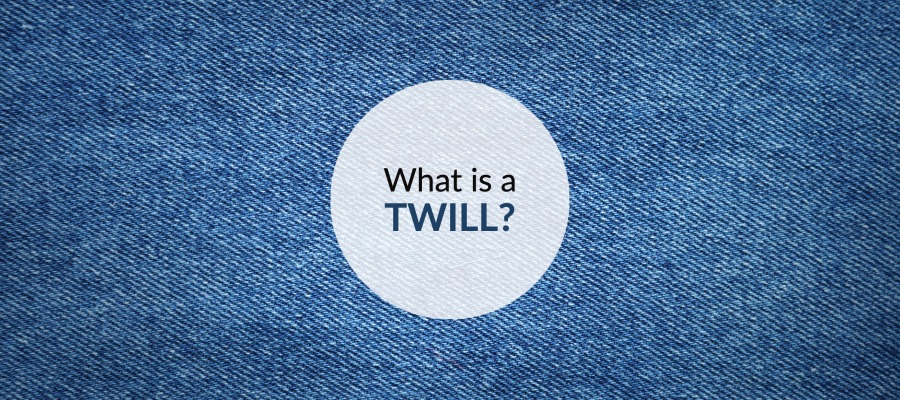
Jacobean Design, A Brief History
The Jacobean Age takes its name from Jacobus, the Latin form of King James I of England. This style of 17th-century decor is best known for intricate carvings, heavy oak furniture, detailed tapestries, and especially crewel embroideries with flowing designs. The type of patterning associated with Jacobean Design has its roots in two places. First, the English imported Flemish tapestries in great numbers during the 17th century. At the same time, Indian palampores were also a very popular import due to the recent founding of the English East India Trading Company, a company devoted to trading with the East.

In the case of both the tapestries and the palampores, designs featured flowing acanthus leaf designs arranged in allover patterns. The palampores also included delicate flowering trees. At the same time these textiles were flowing into England, manufacturers began to forge steel sewing needles. To create crewel embroidery, needleworkers use wool thread on linen fabric. These sharp new needles pushed crewel into its golden age. English embroiders looked at the fabrics surrounding them during this period and created many embroideries with the classic Jacobean elements of flowers, birds, tree of life motifs, and decorative leaves.
Crewelwork inspired countless Jacobean Designs.
Of all the different furnishings of the Jacobean Age, it was the crewelwork in particular that inspired designers to develop patterns for printed textiles. In many cases, English merchants brought examples of these embroideries to Indian designers for them to copy or interpret into printed designs. Jacobean prints and design elements received renewed enthusiasm in the 19th century thanks to William Morris. He once again looked to these textiles for inspiration. His work launched the Arts and Crafts Movement.
Crewel upholstery itself also continues to be used by interior designers today. It provides both a beautiful pattern and a texture that is unmistakably crewel. Jacobean prints continue to be a classic style that never quite leaves the minds of designers. The flowing lines and movement of these patterns make them versatile and interesting in any space.
Resources:
Textile Designs by Susan Meller and Joost Elffers
The New Crewel by Katherine Shaughnessy
Share this post
Author
DESIGN/COLOR TRENDS AND AWESOME INFORMATION IN YOUR INBOX
Sign up for our monthly trend letter









